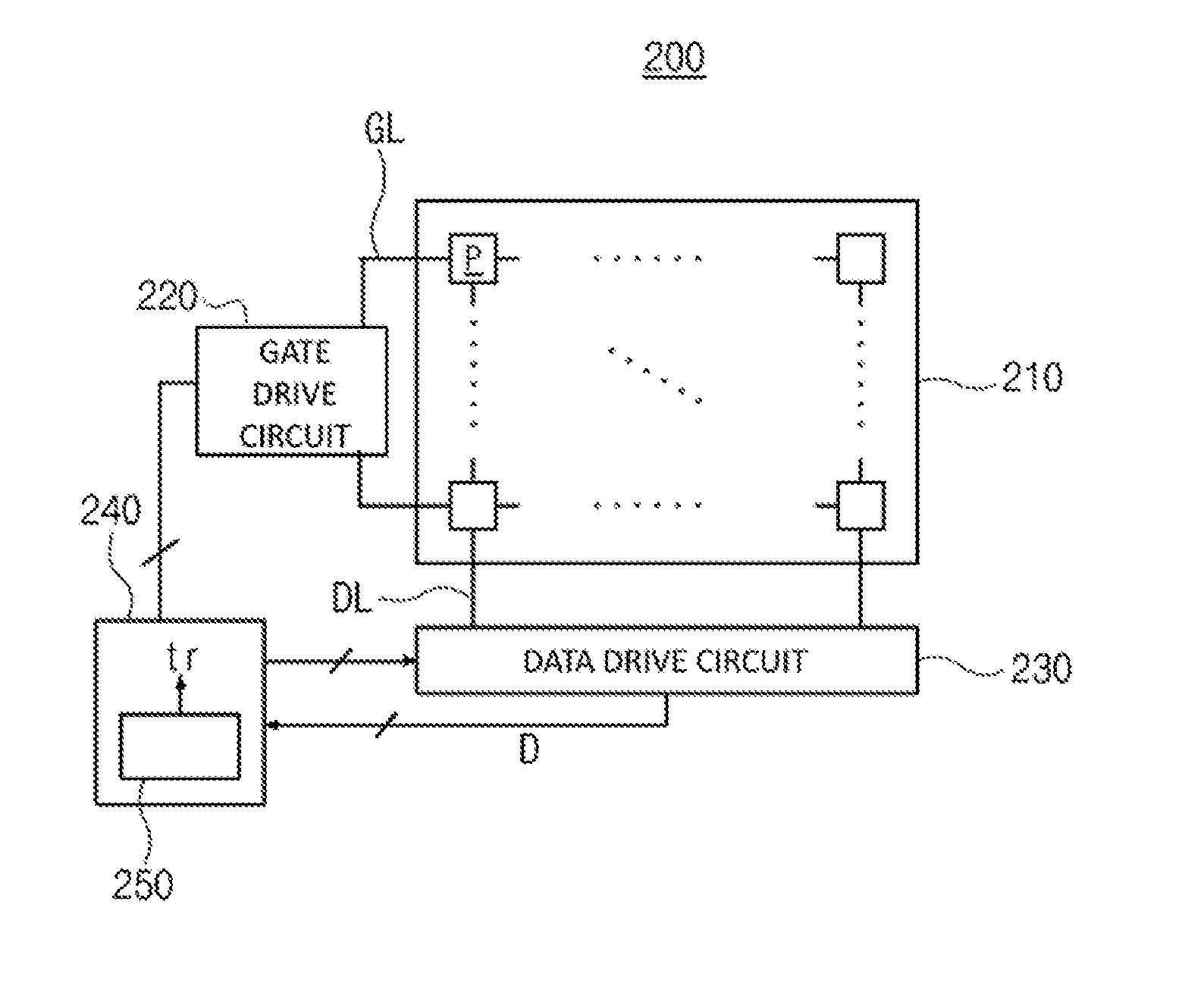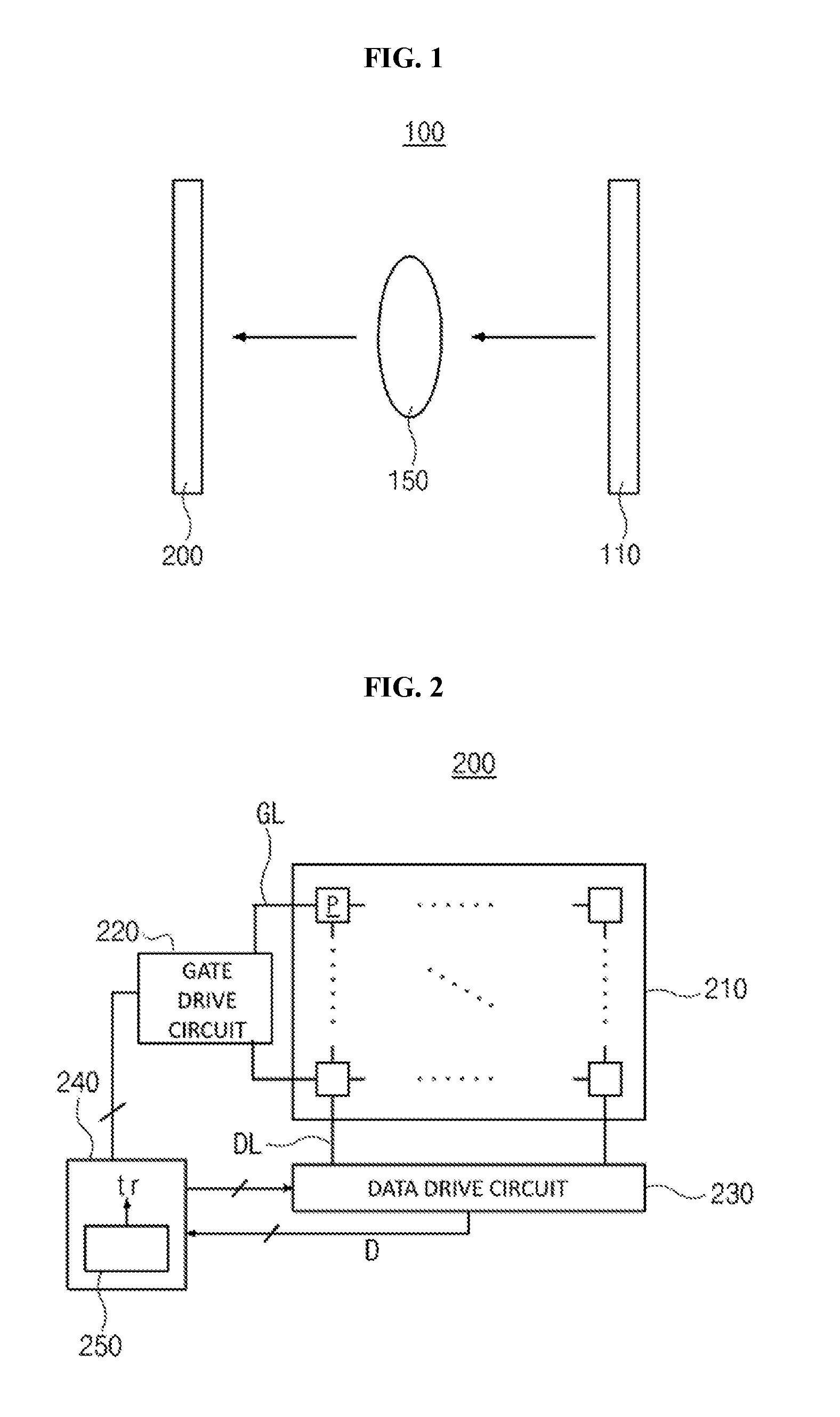Image sensor
a technology of image sensor and image, applied in the field of image sensor, can solve the problems of image discordance, interruption of communication between image sensor and x-ray radiation device, etc., and achieve the effect of preventing errors, preventing the generation of offset-level differences between row lines, and high-quality x-ray images
- Summary
- Abstract
- Description
- Claims
- Application Information
AI Technical Summary
Benefits of technology
Problems solved by technology
Method used
Image
Examples
first embodiment
[0032]As an imaging device 100 according to the present invention, an imaging device that acquires images by radiating various forms of light, such as X-rays, visible light, and the like, may be used, but an X-ray imaging device for acquiring X-ray images is taken as an example for the convenience of description.
[0033]The imaging device 100 may include an X-ray radiation device 110 for generating an X-ray and radiating it onto an object to be checked 150, and an image sensor 200 for detecting the X-ray, having passed through the object 150.
[0034]Here, the image sensor 200 is a sensor that operates through an automatic trigger method, in which whether an X-ray is radiated is autonomously detected and a trigger signal tr is generated based on the result of detection. Accordingly, the image sensor 200 does not need to communicate with the X-ray radiation device 110 for transmission of a synchronization signal.
[0035]Meanwhile, as the image sensor 200, an image sensor using a direct conv...
second embodiment
[0067]FIG. 5 illustrates the timing of application of a gate signal for driving an image sensor according to the present invention.
[0068]The image sensor of the second embodiment may be configured to have the same components as the image sensor 200 of the first embodiment.
[0069]Meanwhile, referring to the timing of application of a gate signal according to the second embodiment, when a trigger signal is generated by the radiation of the X-ray, a gate signal applied on a per-row line basis may be sequentially switched to a turn-off level (that is, the gate signal falls to the turn-off level) from the time point at which the trigger signal is generated (from the start of the charge accumulation period).
[0070]In this case, the actual time period during which charges are accumulated, that is, the time period toff, during which a signal having a turn-off level is applied between the time at which the X-ray is radiated and the time at which image data are read out, is the same for all of ...
PUM
 Login to View More
Login to View More Abstract
Description
Claims
Application Information
 Login to View More
Login to View More - R&D
- Intellectual Property
- Life Sciences
- Materials
- Tech Scout
- Unparalleled Data Quality
- Higher Quality Content
- 60% Fewer Hallucinations
Browse by: Latest US Patents, China's latest patents, Technical Efficacy Thesaurus, Application Domain, Technology Topic, Popular Technical Reports.
© 2025 PatSnap. All rights reserved.Legal|Privacy policy|Modern Slavery Act Transparency Statement|Sitemap|About US| Contact US: help@patsnap.com



